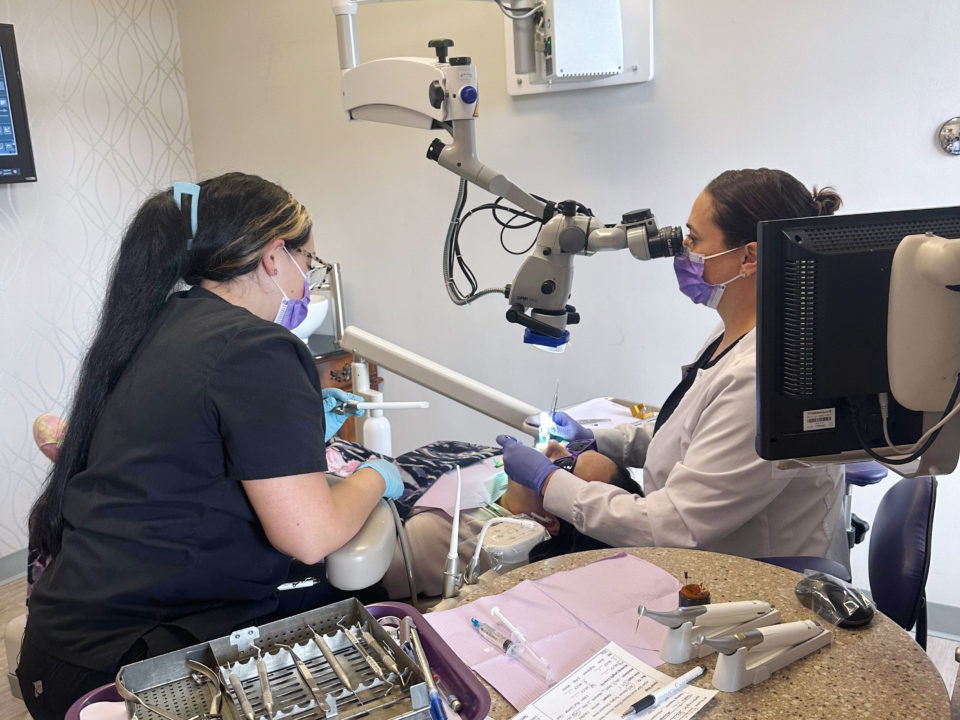
What Are The Symptoms Of A Failed Root Canal?
January 10, 2023
Do I Need A Root Canal? Possible Signs And Symptoms
February 8, 2023
What Are The Symptoms Of A Failed Root Canal?
January 10, 2023
Do I Need A Root Canal? Possible Signs And Symptoms
February 8, 2023At Innovative Endodontics, we want to change the face of the root canal by breaking myths surrounding this procedure. One of the most unfortunate myths about root canal therapy is that it is one of the most painful procedures someone can get. However, this is not the case, especially with modern endodontic equipment and methods.
What Is a Root Canal?
If you need a root canal, you may notice some tell-tale signs of a problem within a tooth. These symptoms of needing a root canal include
- Dull, persistent discomfort
- Extra sensitivity in a tooth that does not go away
- Pain when touching the tooth
- Loose tooth
- Cracked or broken tooth
One common complaint of those who need root canal therapy is pain. Root canal therapy prevents tooth loss and eases pain. Yes, a root canal can alleviate your tooth discomfort instead of worsening it. Relief comes from getting rid of the inflammation that causes the discomfort inside your tooth.
The discomfort that leads patients to seek endodontic care comes from bacteria that cause inflammation and infection of the tooth’s pulp. During the procedure, the endodontist will remove the bacteria eliminating the source of your discomfort.
Another benefit of getting root canal treatment is getting to keep your tooth. If you wait too long for treatment, the infection inside your root canals could spread, resulting in the eventual loss of the tooth. Why should you risk losing a tooth when you can have a non-surgical, painless procedure to save it?
What Happens When an Endodontist Performs a Root Canal Treatment?
From start to finish, you should not feel discomfort at all during your root canal treatment. The first steps of the process involve getting images of the inside of your teeth to pinpoint the location of decay and inflammation. These images help the doctor to plan the best approach to entering the tooth to clean out the infected pulp and remove the nerve.
You will have a numbing agent applied to your gums to reduce the feeling of the needle used to locally inject the anesthesia. Only after the treatment area is numb will the endodontist begin the process.
Because fear and anxiety can play significant roles in patient comfort, you should find a doctor whom you can trust. At Innovative Endodontics, our doctors encourage patients to hold up a hand whenever they need a break from the procedure. They also answer any concerns or questions patients have before the procedure to help ease fears.
During the process of a root canal, the endodontist will fit you with a rubber dam for endodontic procedures. This device protects the inside of the tooth and is for patient safety.
Next, the endodontist opens your tooth to access the root canals inside. Using excellent tools, they clean out the interior of the root canals. This process requires highly skilled hands to ensure that no infected material remains behind to cause future infections.
After cleaning the canals, the endodontist seals them and fills the tooth. Depending on the complexity of the process, you may require one or two visits to complete the root canal treatment. If you had a back tooth treated, you might need to return to your dentist in a couple of weeks for a crown to strengthen the tooth and prevent future damage.
Does Getting a Root Canal Hurt?
Getting a root canal does not hurt. Training during endodontics specialization helps to ensure a painless procedure. An endodontist has undergone extra training when getting their specialty degree in discomfort mitigation and management. Before starting, you will get local anesthesia to numb the area of treatment in your mouth. Therefore, you will not feel anything as you get the root canal.
The pain-relieving effects of a root canal have research backing them. In a study review published by the Journal of Endodontics, discomfort before root canal treatment was much more severe than discomfort after. In fact, the day after treatment, patients reported discomfort at much lower levels than that they experienced before treatment. Only a handful of studies looked at discomfort during treatment. The studies that did look at discomfort during root canals indicated that patients reported minor discomfort no worse than the pain before seeking treatment.
Immediately after the procedure, you should still have the anesthesia numbing your tooth. As that numbing medicine wears off, you may notice minor discomfort in the treated area. Most patients say that this discomfort feels similar to that after getting a filling.
How to Manage Post-Treatment Discomfort
The discomfort after getting a root canal ranks statistically lower than before the procedure caused by the inflammation inside the tooth. After the procedure, most patients do well taking only over-the-counter pain relievers, such as ibuprofen and acetaminophen. If you continue to experience discomfort while taking one of these medications, take the two medications together every six hours, as recommended in our post-operative instructions. You should only need these combined medications for two days.
Most patients may feel pressure or sensitivity for a few days after root canal therapy. However, these are often minor and may not require any medication. Patients generally don’t need antibiotics or prescription pain medications after root canals.
Root Canal Alternatives
If you still feel concerned about whether to get a root canal, the only alternative is dental extraction in many cases. This procedure often requires a longer healing time and can include other complications. Common concerns following a tooth extraction include dry sockets, other teeth moving, and recovery that can last several days to a week or more. Plus, you will have the problem of missing a tooth in your smile.
Visit Innovative Endodontics for Expert Care with Compassion
Schedule a visit with one of our doctors at Innovative Endodontics for expert treatment with a root canal. Let our team at Innovative Endodontics change your mind about root canal therapy.




